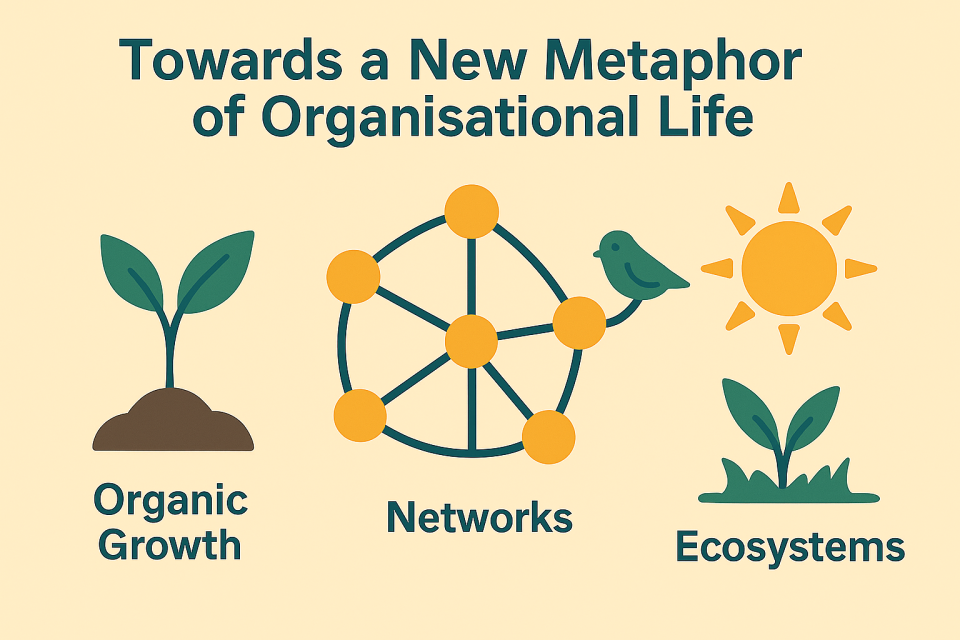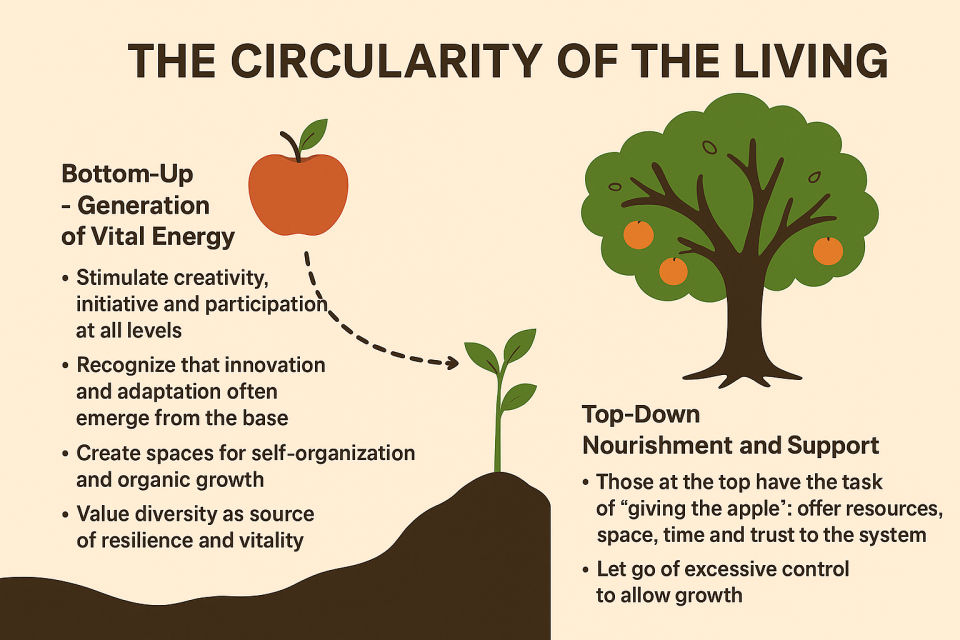To introduce the analysis of the circularity of organizational life, I like to refer to a famous anecdote according to which Isaac Newton had the intuition of gravitational force while, sitting under a tree he was contemplating, he saw an apple fall.
The fall of the apple from above to the ground was Newton’s revelation of the nature of gravity. It is almost amusing, however, that he did not consider another equally extraordinary aspect of that observation: how had the apple come to be so high in the first place? It is precisely in this dynamic of cycles and returns that we can glimpse the circularity of organizational life, in which every fall, growth, or transformation finds meaning only when viewed in its entirety.
The Invisible Miracle of Organisational Life
By observing ourselves and the surrounding nature, we can understand that many living organisms possess the extraordinary ability to move and grow against the force of gravity, from the bottom upward. This ability represents one of the most distinctive and wondrous characteristics of life itself.
A plant growing toward the light, a human standing upright, a bird taking flight, a sprout breaking through the asphalt. In all these phenomena, we recognize the vital energy that actively resists gravity. It uses information, organization, and energy to create order and structure from the bottom upward.
By contrast, what is lifeless passively follows the force of gravity. It moves from top to bottom, without resistance or purpose.
The Conceptual Legacy of an Incomplete Vision
Newton’s brilliance in describing the force of gravity provided an immensely powerful mental model that influenced not only physics but also our way of conceiving social organization and power. We grew up immersed in this “half-Newtonian insight”. We continued to favor top-down movement as a natural and inevitable paradigm.
This conceptual framework has historically translated into:
- Social hierarchies seen as ‘natural’ and immutable
- Conceptions of power that “descend” from top to bottom
- Rigidly vertical organizational systems
- Authority as a force that maintains order against the presumed ‘chaos’ from below
The Circularity of the Living
If we recognize the upward vital force as a fundamental element of life, we can radically rethink our organizational models. This is the circularity of the living: the apple falls from the tree (a downward movement), but it reached the top thanks to the vital forces that generated it from below (an upward movement). For a living organization, this means giving equal attention to both movements.
From Bottom to Top – Generation of Vital Energy:
- Stimulating creativity, initiative, and participation at all levels
- Recognizing that innovation and adaptation often emerge from the ground up
- Creating spaces for self-organization and organic growth
- Valuing diversity as a source of resilience and vitality
From Top to Bottom – Nourishment and Support:
- Those at the top have the task of ‘giving the apple’: providing resources, space, time, and trust to the system
- Letting go of excessive control to allow growth
- Providing vision and direction without stifling emerging energy
- Recognizing that authentic leadership nurtures the fertile ground for the future
Towards a New Metaphor of Organizational Life
Biology offers us alternative metaphors to pure gravitational mechanics:
- Organic growth that proceeds from the bottom up
- Networks of horizontal connections alongside vertical hierarchies
- Ecosystems where each element contributes to the vitality of the whole
- Energy that flows, transforms, and continuously regenerates

It’s not about denying the importance of structures or leadership, but about recognizing that the most resilient and innovative systems are those that can integrate both movements:
the vital energy rising from the bottom and the nourishment descending from the top, in a continuous cycle of generation and regeneration.
We draw inspiration from complexity theory, so pervasive in this 21st century, as a response to the more deterministic and linear visions of the past century. We can revisit the contributions of Donella Meadows, who accurately described the relationship between the need for living systems to self-organize and, at the same time, to generate higher-level hierarchies whose primary purpose is to ensure that the self-organized systems function effectively!
Conclusion
Newton’s apple taught us a lot about gravity. Perhaps, however, it is time to complete the lesson: to observe with equal wonder and attention the vital force that brought that apple so high. Only by closing this conceptual circle can we design organizations and societies that are truly worthy of the complexity and beauty of life itself.
An area still largely unexplored in organizational sciences is understanding the design principles that are useful for creating organizations capable of responding to such complexity. I will return to write about this in more detail soon.

